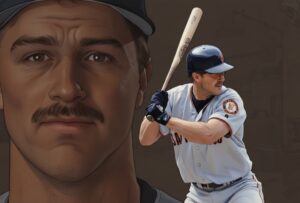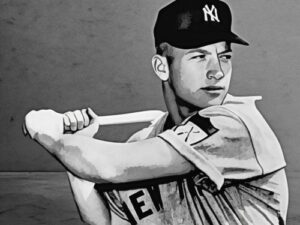At the start of the 1962 season, Sandy Koufax was a .500 pitcher with an ERA just below four runs per game. Far from being a superstar or a household name, Koufax was considered a disappointment, a 25-year old lefty with promise and potential but little to show for it.
That started to change in 1962. Koufax won four of his first five starts, and it was in his fourth start that he finally pitched to the level the Dodgers thought he could. On April 24 at Wrigley Field, Koufax struck out 18 Cubs’ batters in a complete game six-hit gem. After going winless in his first four starts in May, the southpaw got it together again. He struck out 10 Giants in a five-hit victory at Chavez Ravine, struck out 16 five days later against the Phillies, and four days later he proved he could win when he didn’t have his greatest stuff when he scattered 13 hits but fanned 10 against the New York Mets at Shea Stadium. In his next start at Philly, Sandy struck out 13, but it was at the end of June that he really opened eyes.
On June 30, at Dodger Stadium, in front of a Saturday crowd of 29,797 that included Hollywood celebrities, Koufax overpowered the expansion Mets. In the first inning, the lean lefty struck out leadoff man Richie Ashburn on three pitches, the last a 97-mph heater. He then fanned Rod Kanehl in three pitches, including a knee-bending curveball. The next batter was Felix Mantilla, who Koufax carved up on three pitches, thus giving him a “perfect inning” – three strikeouts on nine pitches. It was the 11th such perfect inning in baseball history. But that was just the first act in this masterpiece.
Koufax set down all three batters he faced in the second inning, two by strikeout. Leading off that frame, Frank Thomas hit a sharp groundball to the right of shortstop Maury Wills, who went deep into the hole to field the ball and fire to first for the out. It would be the hardest hit ball of the game against Koufax.
He got two more swinging K’s in the third inning as he set the Mets down 1-2-3 again. Koufax walked Ashburn in the fourth, but got a double play to end that inning without surrendering a hit. By this time he had decided to rely solely on two pitches: his fastball and his curve. “I would have felt sick if someone had gotten [a hit off my changeup],” Koufax said after the game. “If they were going to get a hit, I made up my mind it was going to be off a fastball or a curve.”
Another strikeout in the 5th, two more in the 6th, and a 1-2-3 inning in the 7th followed. Koufax entered the 8th inning with a 5-0 lead and the only suspense now was whether he would pitch a no-hitter. In the 8th inning, he struck out Cliff Cook on a 96-mph fastball to open the frame and Chris Cannizzaro on a similar pitch to end it without allowing a hit. By now, the crowd at Chavez Ravine was cheering loudly for the young hurler and everyone knew what was at stake. Bucking tradition, Dodgers’ coach Solly Hemus needled Koufax a few times between innings, asking Sandy if it was always that easy. “No, it surely isn’t,” Koufax shot back.
LA manager Walter Alston made two moves to shore up his defense in the 9th inning: moving Ron Fairly from first base to right field; and inserting Tim Harkness at first. Koufax took the mound needing three outs to toss the first Dodgers’ no-hitter since Sal “The Barber” Maglie in 1956. To start the inning, he would face Gene Woodling, the old pro of earlier Yankees’ fame, pinch-hitting for the Mets’ pitcher. Woodling worked a tiring Koufax for a walk, taking four straight pitches wide after looking at a strike. The next batter was Ashburn who fell behind Sandy on two fastballs, but then smacked a pitch to short which resulted in a force at second of Woodling. One out. Kanehl, who had already fanned twice against Koufax, was up next. He fell behind 0-2 and then hit a weak groundball to third which was fielded by Junior Gilliam who tossed it to second for another force play. Two outs.
The only thing standing between Koufax and a no-hitter was Mantilla, who he started off with a fastball that was low for ball one. The next offering was another heater, this one outside for ball two. Pitch #3 was another fastball, as Sandy was intent on challenging Mantilla for the final out. Mantilla flitted his bat through the strike zone and sent the pitch back for a foul, making the count 2-and-1. For the next pitch, Koufax stayed with his fastball, sending it letter high to the Cubs’ #3 hitter. Mantilla was able to pull the pitch and hit it right at shortstop Maury Wills, who barely had to move before he flipped it to second baseman Larry Burright for the force out. Three outs, game over, no-hitter.
In authoring his first no-hit game, Koufax did not allow any batter to reach past first base. He pitched the game in 2 hours and 46 minutes, and the victory inched the Dodgers to within a half-game of the Giants for first place in the National League. More importantly for Los Angeles, it marked the emergence of Koufax as their ace. With a record of 11-4 and three months left in the season, it appeared Koufax would make a run at his first 20-win campaign, but instead he suffered an arm injury in the middle of July and missed more than two months. He ended up with 14 victories and a league-leading 2.54 ERA for the ’62 season. The next season he would toss a second no-hitter, and the following season another, and in 1965 he topped it off with a fourth no-hitter, which was a perfect game. He would have a five-year run that would lead him to Cooperstown.
After he recorded the final out, Koufax was mobbed by his teammates as he reached the third base line on his way to the Dodgers’ dugout. In the clubhouse, Alston teased Koufax by recording an “0-for-4” on the chalkboard under the acknowledgment of Koufax’s no-hit accomplishment. Koufax playfully wiped it out and posed for the media (as seen in the photo that accompanies this article). In the other clubhouse, the manager of the Mets, Casey Stengel, found himself in a rare situation. The colorful Casey had no one to listen to his jaws flap – all of the reporters were surrounding Koufax.
“Where’s all them reporters tonight,” Casey quipped with a wink, “there must be something going on!”






